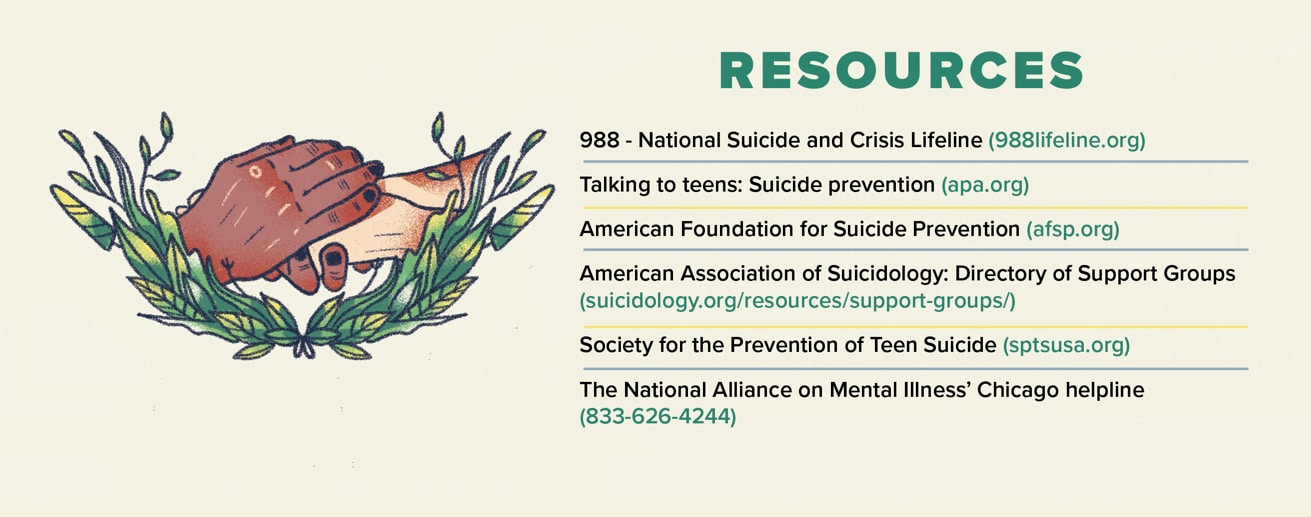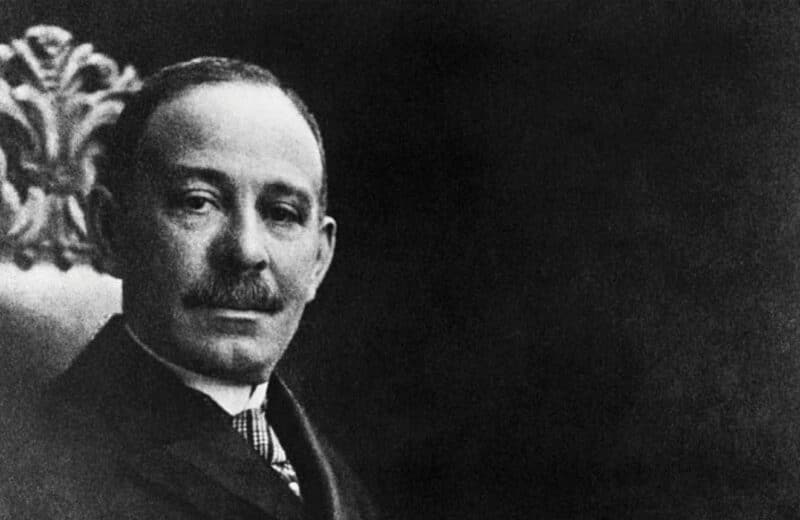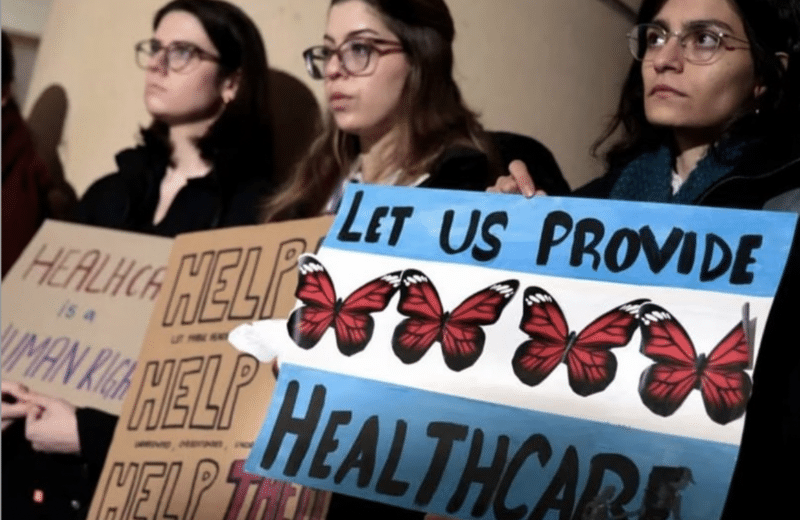Connection and communication help prevent adolescent suicides
On a rainy day last winter, the principal of a suburban Chicago high school read the morning announcements over the intercom. As she reported that a student died by suicide that morning, her tone of voice didn’t fluctuate. She noted that the school’s psychologists were available to speak with anyone who needed to talk, but the loud wails of the boy’s classmates and friends muffled her words.
Shocked and overcome with grief, some of the boy’s friends, learning about his death for the first time over a loudspeaker, went home to mourn privately. Other classmates continued the school day in shock and despair.
The boy’s parents had insisted the entire student body know he died by suicide. The news could prompt conversations and mental health support, preventing other teens from attempting suicide themselves.
Their concerns for the boy’s peers were justified. Throughout her career, Cecelia Horan, PsyD, of Ascension Illinois Alexian Brothers Behavioral Health Hospital, says she has seen multiple suicide clusters, a phenomenon where a group of individuals dies by suicide within a close timeframe.
The Centers for Disease Control and Prevention (CDC) reports that clusters occur with adolescents and young adults more than with other age groups. In 2012, Lake Forest High School had three student deaths within as many months.

Imran Shakir, DO, child and adolescent psychiatrist and chief medical officer at Chicago Behavioral Hospital in Des Plaines, says school administrators need to exercise caution when breaking news of a student suicide to the student body, keeping in mind other vulnerable teens. “The typical student will experience sadness and grieving in a constructive way. That doesn’t necessarily apply to the depressed or anxious teen. It comes down to crafting interventions with that person in mind,” Shakir says.
And the number of depressed and anxious teens is increasing. The pandemic has greatly impacted high school students’ mental health, according to a recent study from the CDC. One in 5 of those surveyed reported that they seriously considered suicide, and more than 2 in 5 (44%) reported persistent feelings of sadness or hopelessness. These numbers increased from 26% in 2009 and 37% in 2019. Additionally, adolescents who identify as lesbian, gay, or bisexual, or who are unsure of their sexual identity, have a higher risk of depression and suicide compared to heterosexual adolescents, the CDC reports.
The study also noted that teens who felt connected to the adults or peers in their lives were considerably less likely to feel hopelessness or attempt suicide. The findings reveal just how crucial it is for teachers, students, and support staff to work within schools to restore those connections after remote learning.
Build connections
When Lake Forest High School experienced its suicide cluster in 2012, students could turn to the youth-led group CROYA (Committee Representing Our Young Adults). The community had created CROYA after a similar cluster hit Lake Forest and Lake Bluff in the 1970s. Based at a local recreation center, the organization provides programming and a place for teens to gather and talk with adults and peers.
The best way to decrease the likelihood of teen suicide is to talk about it, says Pete Myers, PsyD, director of group and therapeutic community services at Yellowbrick, a mental health treatment center for youth and emerging adults in Evanston. But open and honest discussions require an open and honest relationship between parents and teens. Building that foundation starts with judgement-free conversations.
To get in the swing of such chats, Myers suggests having regular conversations with your teen about what’s going on in their lives, the good and the bad. Don’t criticize; show them you’re interested in their lives.
“Be comfortable with silence. If you’re quiet, they’ll open up and talk a bit more.”
“Often, teens report feeling as if the only thing their parents want to hear is how well they’re doing, when in fact [teens] have lots of self-doubt and worry,” Myers says. “They keep those concerns to themselves or only share them with friends because they don’t want to disappoint or distress their parents.”
Listen more and talk less to help teens open up. “Be comfortable with silence,” Horan says. “If you’re quiet, they’ll open up and talk a bit more.”
She often recommends the book I’d Listen to My Parents if They’d Just Shut Up: What to Say and Not Say When Parenting Teens by Anthony Wolf. Horan likes the book because it teaches parents how to encourage kids to talk about how they feel at their own pace.
Active listening goes a long way. Rather than trying to solve the problem for your teen, repeat your interpretation of what the child told you, such as, “I think I heard you say this makes you sad and angry at the same time.” You can share your feelings too, which signals that it’s okay to have feelings and express them.
Talk about the tragedy
Following a peer’s suicide, Shakir suggests that teens might be more forthcoming if you discuss the suicide while doing a familiar activity together. You might ask your teen:
- How are you dealing with the loss of this classmate? If they’re not comfortable talking about it, ask how their friends are dealing with it.
- How has school changed? The teachers? Your friends?
- How did you feel when you heard?
- Is it something you thought might happen?
Your teen’s answers will help you understand how the suicide has affected them. Listen for whether or not they might be blaming themselves for causing it or not doing enough to prevent it. If they disclose that a friend is really struggling, that could give you insight into how they’re doing, Shakir says.
“Acknowledge those feelings. Make sure they know they’re being heard,” Myers says. “Remind them that ultimately, the person responsible for the suicide is the person themselves.”
You could also tune into their social media; their posts or comments will indicate how they’re feeling.
Always be direct, honest, and patient, Myers says. Let your teen know you’ll always be available if they want to talk.
If your teen is not talking to you, find out if they’re getting support from someone else, Myers says. Don’t leave them alone in their grief. Ask them directly if they ever think suicide might be a solution for their struggles. Remind them you’re there to support them, to work through any problem that might arise, however long it takes.
Moving forward
In the wake of a classmate’s or friend’s suicide, some teens might experience random bouts of anger, guilt, or denial.
If you observe uncharacteristic difficult behaviors, talk about them and how the tragedy may have led to them to feel this way instead of punishing them, Shakir says.
Maintain routines for your family as much as possible. Consistency and activities they enjoy will help with healing. If a funeral is planned, let your child decide whether to attend. If they ask to stay home from school for a day or two, let them. But find out what they need from you to return the next day.
At home, watch for changes in behaviors: Reckless conduct, substance use, self-isolating, anxiety, agitation, and shifts in eating or sleeping patterns are all red flags. If your teen doesn’t exhibit any of the warning signs but your gut instinct tells you otherwise, trust your gut, Myers says.
“With suicide in teens, parents need to err on the side of caution,” Horan says. “Teens are known for impulsivity. A child will make a rash, impulsive choice that they might not have made 15 minutes later, and sometimes, it’s too late.”
If you’re noticing your child is having thoughts of suicide, whether passive (talking about getting hit by a car and killed) or active (planning how they’re going to die), Shakir advises taking your teen to the hospital or calling 988 or another crisis hotline immediately.
“This is no different than having chest pains,” Shakir says. “When someone says they’re suicidal, you rush to get them an evaluation and let the professionals decide how to intervene. If they don’t need hospitalization, we will guide them to other programs in the area.”
Once teens get into a treatment program, the prognosis is good, Horan says, particularly with heavy family involvement. Family therapy teaches everyone how to resolve conflict and communicate in healthy, productive ways.
Talking leads to connection, and connection helps prevent suicide.
So don’t wait. Be a safe space for you child. Start talking — and listening — today.














